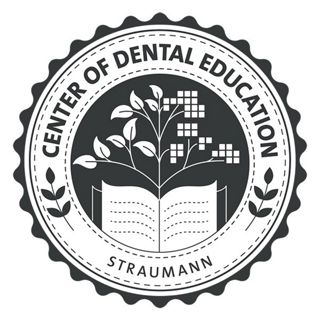Introduction
Smilecloud represents a significant leap forward in dental technology, providing an integrated platform that facilitates seamless communication of clinicians with patients, dental laboratories, and dental professionals. By leveraging the power of digital tools, Smilecloud enhances every aspect of the rehabilitation process, from diagnosis and treatment planning to execution and follow-up. This comprehensive approach ensures not only improved clinical outcomes, but also a more streamlined and collaborative experience for all involved. Furthermore, Smilecloud turns design into an immersive experience by engaging patients with meaningful visual communication. In our practice, this approach has increased case acceptance by allowing patients to visualize diverse clinical scenarios and understand the potential outcomes of their treatment. By previsualizing these scenarios, we, as clinicians, can provide a more comprehensive and reassuring consultation experience, aligning patient expectations with clinical possibilities.
In the following case report, we present a successful, fully-guided full-arch rehabilitation, underscoring the clinical benefits of digital workflows. Our aim here is to demonstrate how digital solutions can elevate the standard of care, fostering better clinical results and enhancing patient satisfaction.
Initial situation
A 65-year-old male patient, a generally healthy smoker consuming 10 cigarettes per day and taking no medications, presented to our clinic seeking a maxillary fixed restoration to replace his existing removable partial denture. His primary goal was to achieve a natural-looking smile that closely mimics the appearance of natural teeth in terms of shape, color, and alignment. Additionally, he desired the new restoration to be stable and free from movement, providing a secure fit that would enable him to chew food properly without discomfort or difficulty, thereby improving his overall quality of life.
Extraoral examination showed no significant abnormalities. The patient presented a medium smile line (Figs. 1-3).
A bridge is visible after the removable prosthesis is taken out (Fig. 4).
The intraoral examination revealed an old bridge spanning teeth #23 to #26, supported by a removable metal partial denture with attachments on the bridge. Teeth #22 to #17 were extracted a long time ago, and the ridge in this region had healed. No plaque or inflammation was observed. The teeth exhibited mild to moderate attachment loss, but no endo-perio lesions or root fractures were observed (Figs. 5-8).
Since analysis of the panoramic views indicated sufficient vertical and horizontal bone availability and adequate bone quality, there was no need for Guided Bone Regeneration (GBR) (Fig. 9).
According to the ITI SAC Classification, the case was categorized as advanced to complex.
Treatment planning
We utilized the Smilecloud web-based platform to improve communication and visualize various treatment scenarios with the patient. This platform enabled us to create highly realistic smile designs and easily share them with our team and the patient, significantly enhancing discussions and informed decision-making regarding the treatment plan.
For the procedure, we decided on the Straumann® Pro Arch approach, involving the immediate placement of six Straumann® BLX Roxolid® SLActive® implants in the upper jaw. This digitized method was performed following atraumatic extractions, with provisional restorations planned to be placed on the same day. The treatment workflow included the following:
1. Digital mock-up with Smilecloud (Figs. 10-12).
2. Digital planning using coDiagnostiX® (Figs. 13-15).
3. Surgical guide design in coDiagnostiX® and printing for the prosthetic-driven drilling protocol (Figs. 16-17).
4. Atraumatic extraction of the hopeless teeth: #23, #24, #25 and #26.
5. Placement of six Straumann® BLX Roxolid® SLActive® implants.
6. Immediate loading/provisionalization.
7. Final prosthetic rehabilitation with a screw-retained bridge (6 units) on implants.
Surgical procedure
Two grams of Augmentin (amoxicillin/clavulanic acid) were administered two hours before surgery, along with a 0.12% chlorhexidine mouthwash used 24 hours beforehand. Local anesthesia with 4% articaine and 1:100,000 epinephrine was given. The bridge was removed, and atraumatic extraction of the hopeless teeth (#23, #24, #25, and #26) was performed (Figs. 18-20).
The previously sterilized provisional and surgical guides were then verified for correct fit. (Figs. 21,22).
The surgical guide was positioned, aligning it with the arch and extracted teeth. Subsequently, the fixation pins were drilled and inserted (Figs. 23,24).
The surgery was initiated using a mucosa punch at 15 rpm through the sleeves of the surgical template. This method allowed for a blade-free incision with minimal trauma (Figs. 25,26).
After the mucosal punch was removed, the surgical guide was reinserted to begin the placement of implants (Fig. 27).
The surgical protocol, provided alongside the surgical template, recommended the sequence of instruments required to prepare each implant site. The osteotomy sites were then prepared following the manufacturer's recommended drilling protocol:
- Position #16: Straumann® BLX implant ∅ 4.5 mm RB, SLActive® 12 mm Roxolid®.
- Position #14: Straumann® BLX implant ∅ 4.0 mm RB, SLActive® 12 mm Roxolid®.
- Position #12: Straumann® BLX implant ∅ 4.0 mm RB, SLActive® 12 mm Roxolid®.
- Position #22: Straumann® BLX implant ∅ 4.0 mm RB, SLActive® 12 mm Roxolid®.
- Position #24: Straumann® BLX implant ∅ 4.5 mm RB, SLActive® 12 mm Roxolid®.
- Position #26: Straumann® BLX implant ∅ 4.5 mm RB, SLActive® 12 mm Roxolid®.
A copious amount of saline irrigation was used, and parallelism was checked (Figs. 28-31).
Screw-retained abutments were placed with a torque of 35 Ncm at the following positions (Figs. 32-33):
- Position #16: Straumann® RB/WB, angled 30°, ∅ 4.6 mm, gingiva height 3.5 mm.
- Position #14: Straumann® RB/WB, angled 17°, ∅ 4.6 mm, gingiva height 3.5 mm.
- Position #12: Straumann® RB/WB, angled 17°, ∅ 4.6 mm, gingiva height 3.5 mm.
- Position #22: Straumann® RB/WB, angled 17°, ∅ 4.6 mm, gingiva height 3.5 mm.
- Position #24: Straumann® RB/WB, straight, angled 0°, ∅ 4.6 mm, gingiva height 3.5 mm.
- Position #26: Straumann® RB/WB, angled 30°, ∅ 4.6 mm, gingiva height 3.5 mm.

A Center of Dental Education (CoDE) is part of a group of independent dental centers all over the world that offer excellence in oral healthcare by providing the most advanced treatment procedures based on the best available literature and the latest technology. CoDEs are where science meets practice in a real-world clinical environment.
Prosthetic procedure
The use of a fully-guided surgical protocol alongside a completely digital prosthetic workflow allowed for the precise design and milling of PMMA provisional prostheses (Figs. 34-35).
The implant loading protocol implemented was immediate loading, with equal distribution of forces across the entire prosthesis. Temporary abutments were placed on top of screw-retained abutments. The spaces between the titanium copings and the provisional prosthesis were filled (Figs. 36-38).
Any excess material was excised, and the provisional prosthesis was subsequently polished to ensure a smooth finish (Fig. 39). The patient received a screw-retained provisional prosthesis on the same day. The provisional prosthesis was then attached and securely fixed to the titanium copings with 15 Ncm torque (Fig. 40). Oral hygiene instructions were provided, and occlusion was assessed (Figs. 41,42).
A final control radiograph confirmed that all parameters were within normal limits (Fig. 43).
During follow-up visits, the patient exhibited excellent healing with no postoperative complications. The provisional prosthesis demonstrated optimal fit and stability, enhancing patient comfort and function (Fig. 44).
Four months later, we proceeded with the definitive prosthetic procedure for this case, subject to clinical and radiographic evidence confirming osseointegration.
The case was completed using Straumann® RevEX™ scanbodies for a full monolithic design with a complete digital workflow.
First, an intraoral scan of the opposite arch was taken, followed by an intraoral scan with the screwed temporary abutment. An intraoral bite scan and an intraoral scan of the soft tissue with screw-retained abutments in place were then taken. Reverse scanbodies (Straumann® RevEX™,) were attached to the provisional prosthesis, which was scanned extraorally. Next, the prototype and verification jig were designed, followed by the milling of the prototype and verification jig (Figs. 45,46).
During the second visit, the milled prototype and verification jig were tried in, and the design and manufacture of the final prosthesis were completed (Figs. 47,48).
The final abutment utilized was Variobase® for Bridge, placed on top of screw-retained abutments. The chosen final restoration material for this procedure was monolithic zirconia (Figs. 49,50).
The delivery of the final restoration was then performed, and the esthetics, occlusion, and function were verified (Figs. 51-55). The panoramic control radiograph showed that all measurements were within expected ranges (Fig. 56).
At the 18-month follow-up after completing the treatment, an intraoral, extraoral, and radiographic evaluation was performed. No pathologies were observed, and the results remained stable over time (Figs. 57-62).
The patient expressed his satisfaction with the treatment outcomes, stating, "Seeing my new smile before starting the procedure was a game changer. I was confident from the beginning that my final result would be as I imagined."
Treatment outcomes
The combination of Pro Arch BLX Straumann® implants, coupled with the utilization of Straumann® RevEX™ for a full monolithic design, and integrated into a comprehensive Smilecloud digital workflow, yielded favorable treatment outcomes for full-arch rehabilitation in this case. The seamless coordination between surgical and prosthetic phases, facilitated by state-of-the-art digital technologies, enhanced precision, efficiency, and patient comfort and satisfaction. This case underscores the important role of digital dentistry in ensuring reliable and esthetically satisfying results in implant therapy.
Author’s testimonial
As a clinician, witnessing this treatment's positive impact on the patient's quality of life was immensely rewarding. He expressed profound gratitude for his new smile, which not only restored his oral function but also boosted his self-esteem. This case reinforced my belief in the power of a completely digital approach in implant dentistry, allowing us to provide our patients with the best possible care.
